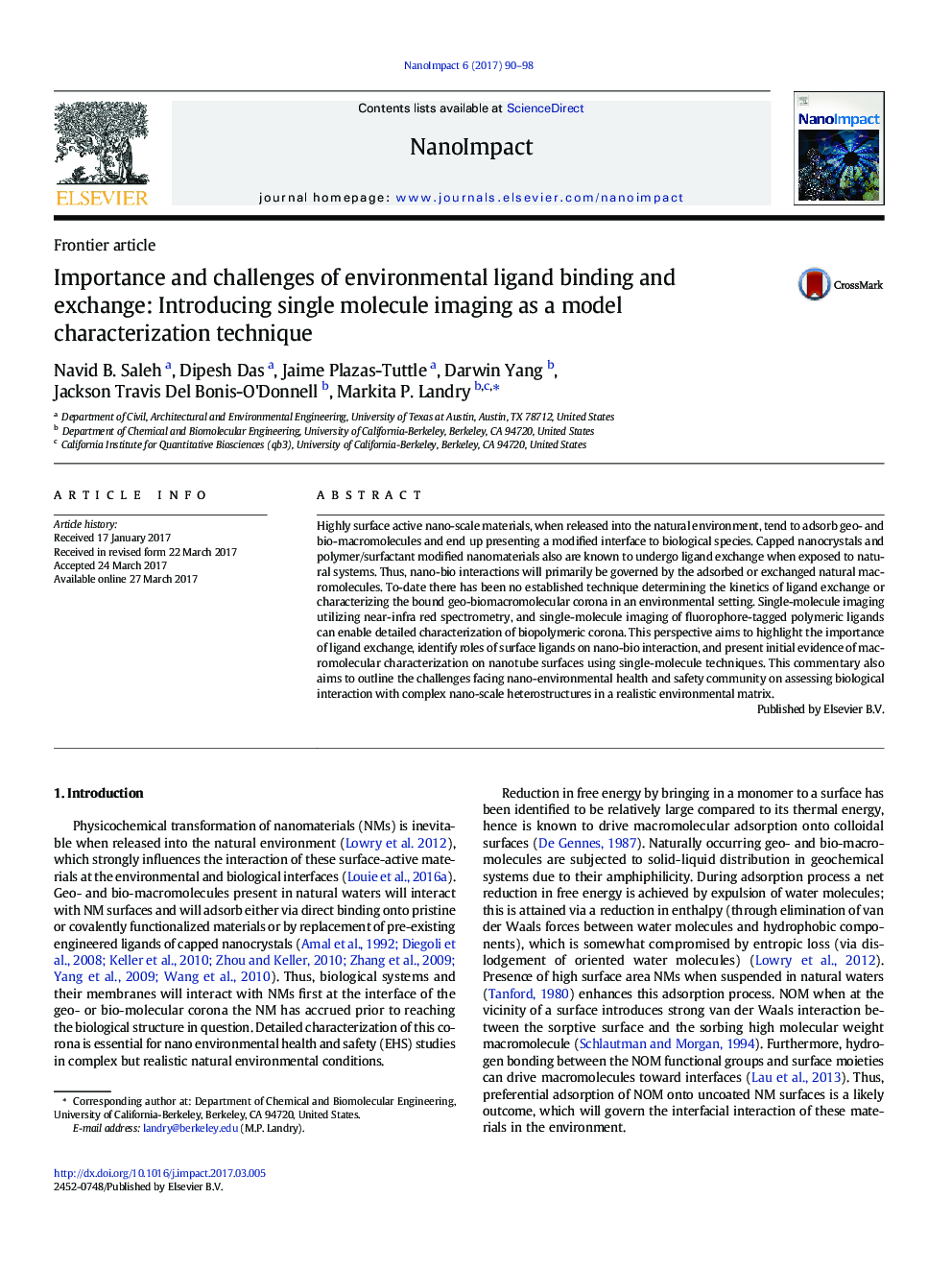| Article ID | Journal | Published Year | Pages | File Type |
|---|---|---|---|---|
| 5560757 | NanoImpact | 2017 | 9 Pages |
•Overview of ligand interactions with nanomaterials.•Review of previous assays that have probed polymeric and ligand interactions with synthetic materials.•Knowledge gaps exist in understanding interactions that drive natural organic matter-nanomaterial formation.•Single molecule measurements can probe complex biological systems at the nanoscale interface.•Single molecule fluorescence microscopy can measure polymer ligand adsorption and desorption from single nanoparticles.
Highly surface active nano-scale materials, when released into the natural environment, tend to adsorb geo- and bio-macromolecules and end up presenting a modified interface to biological species. Capped nanocrystals and polymer/surfactant modified nanomaterials also are known to undergo ligand exchange when exposed to natural systems. Thus, nano-bio interactions will primarily be governed by the adsorbed or exchanged natural macromolecules. To-date there has been no established technique determining the kinetics of ligand exchange or characterizing the bound geo-biomacromolecular corona in an environmental setting. Single-molecule imaging utilizing near-infra red spectrometry, and single-molecule imaging of fluorophore-tagged polymeric ligands can enable detailed characterization of biopolymeric corona. This perspective aims to highlight the importance of ligand exchange, identify roles of surface ligands on nano-bio interaction, and present initial evidence of macromolecular characterization on nanotube surfaces using single-molecule techniques. This commentary also aims to outline the challenges facing nano-environmental health and safety community on assessing biological interaction with complex nano-scale heterostructures in a realistic environmental matrix.
Graphical abstractSingle-molecule imaging reveals natural ligand exchange and binding on nanomaterial surfaces in a bio-complex environment.Figure optionsDownload full-size imageDownload high-quality image (367 K)Download as PowerPoint slide
